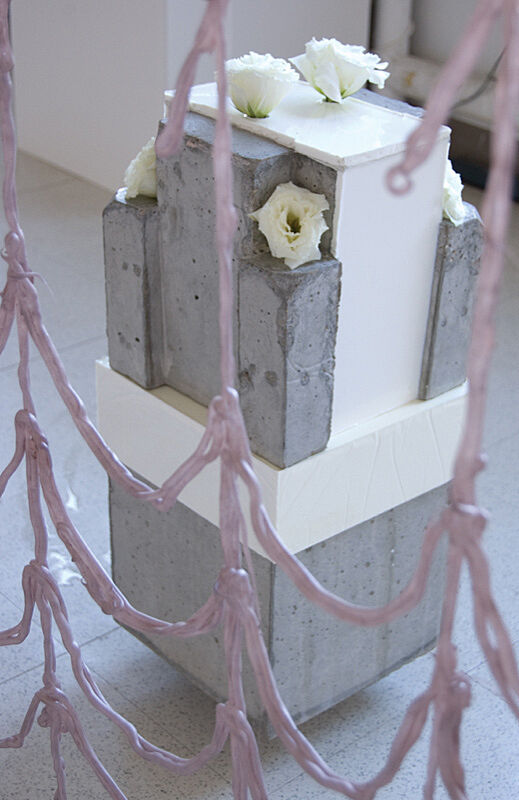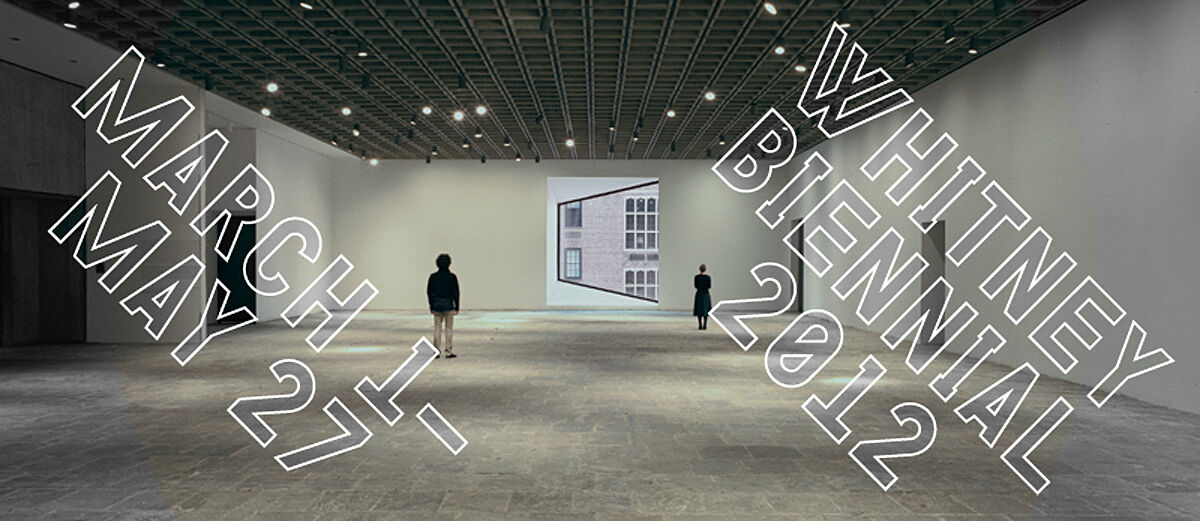Cameron Crawford
Born in 1983 in Boulder, Colorado
Lives and Works in New York
Cameron Crawford's 2012 Biennial works, both sculptures titled making water storage revolution making water storage revolution, began with the idea of “useless labor.” Because almost every conceivable action can in some way be understood in relation to a greater purpose, however, this seemingly simple notion is virtually impossible to realize in practice. For Crawford, this riddle presents a somewhat terrifying philosophical conundrum. If not a successful example of useless labor, these pieces offer at least a vehicle by which to pose the problem. Every element in their fabrication involved an absurd amount of extraneous, doggedly “wasted” labor: The rickety hinges on the folding screen so laboriously constructed by Crawford are not functional. Rolled-up muslin banners are contained in the structure; the face of each one has been entirely covered in pencil lines, and each line was marked as important with a highlighter. Such banners are commonly seen at public events, printed with slogans and taglines; here, however, the artist’s inordinately time-consuming process has resulted in absolutely no political or social utility. Crawford makes specific note that the sculptures are not formally attractive, and therefore lack even the artistic use of being aesthetically beautiful. In the end, perhaps what the works achieve is the sophisticated and humorous presentation of a paradox.
Sick Sic Six Sic ((Not)Moving): Seagullsssssssss ssssssssssssssssss. is the artist’s response to the deaths of six people he knew. His inability to fully understand their significance to him is reflected in his use of homophones (words that are pronounced alike but which differ in meaning) that skirt the edge of comprehension, as well as in the near-immateriality of this “invisible curtain, made of invisible blocks,” as Crawford describes the piece. The work is dated 2018, and as time advances, it will be redated to always be six years in the future. By imposing this temporal distance—not so remote as to be inaccessible, but too far to discern clearly—Crawford suggests that the meaning of his works, like the capability to comprehend loss, is always faintly perceptible yet remains forever just out of reach.


